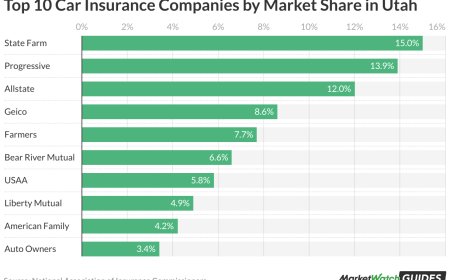Data Is the New Steel: How Smart Analytics Is Forging the Future of Manufacturing

Manufacturing plants now generate massive volumes of data around two petabytes annually making them the top data producers across industries. Despite this, only about 22.6?% of manufacturing leaders can assign measurable value to their data, and many still fail to assess it fully. Smart analytics can change that. Real-time data insights can generate an average 134?% ROI, with top performers seeing gains over 250?%. Modern analytics also cuts downtime by up to 50?%, scrap by 1530?%, and boosts throughput by around 14?%?. These numbers underscore why Manufacturing Data Analytics must sit at the core of every modern production strategy.
Start with Reliable, Standardized Data
High-impact analytics begins with clean, standardized data. Manufacturers must gather data from a range of sources: PLCs, SCADA systems, IoT sensors, MES and ERP databases, and quality control logs. This requires building robust data pipelines that ensure timestamp alignment, filtering of noise, and contextual integration (e.g., linking machine status to a specific shift or lot number).
Companies that invest in data engineering tools like Apache Kafka for ingestion and Spark for batch processing free data scientists from spending the majority of their time on data preparation, allowing them to focus on analysis and modeling.
Descriptive Analytics Brings Visibility
Once data streams are reliable, descriptive analytics offers visibility into operations. You can build real-time dashboards that present KPIs such as Overall Equipment Effectiveness (OEE), cycle times, defect rates, and machine availability. This visibility alone helps reduce response time and increase overall productivity by around 15?%. For example, an automotive plant reduced weld defects by nearly 47?% after operators began tracking quality data live in dashboards.
Predictive Maintenance Cuts Failures
Manufacturers reach the highest gains when they shift from reacting to fixing before breakdowns occur. Predictive maintenance relies on analyzing machine vibration, temperature, and acoustic sensors with machine learning models like random forest or gradient-boosted trees. Deployment is often executed via edge devices running inference pipelines, backed by centralized dashboards for monitoring health scores.
In practice, companies cut downtime by up to 50?% using predictive analytics, according to industry reports. For instance, GEs use of its Predix platform reduced maintenance costs 1025?% and breakdown incidents by 520?%?.
Quality Analytics Reduces Scrap
Inline quality checks powered by vision systems and real-time analytics can detect defects with accuracy over 95?%. This approach helps manufacturers reduce scrap by 1530?% by catching issues immediately rather than post-production.
In the food industry, one processing plant used inline analytics to spot irregularities in real-time. It reduced scrap waste and increased OEE by nearly 14?%, translating to $8.5 million in annual savings.
Advanced Supply Chain Optimization
Smart analytics extends beyond equipment and into inventory and logistics. IoT data, material usage, and supplier schedules can feed predictive models to optimize stock levels, reduce lead time variance, and prevent stockouts. Reports show that analytics reduces inventory carrying costs by 30?% and improves on-time delivery rates by 40?%?. One food processor integrated weather patterns and real-time usage to improve delivery accuracy to 96?% and cut shipping costs by $2.4?million annually.
Maximize Throughput via Process Analytics
Real-time throughput monitoring helps uncover hidden inefficiencies. Manufacturers analyzing cycle breaks, hold times, or material flows often secure 14?% gains in throughput?. A metal plant used predictive control to boost production 50?% and raise overall equipment output by 30?%?.
Such process enhancements depend on integrating analytics tools directly into operations and giving teams the autonomy to adjust parameters based on data.
Also Read: Dark Data in Manufacturing: The Hidden Goldmine for Efficiency and Innovation
Optimize Energy and Resources
Real-time energy data gives manufacturers the ability to modulate energy usage during off-peak times or idle cycles. Chemical plants using this approach have cut consumption by 18?%, saving $4.3?million annually. Many factories report 1020?% energy savings once smart meters are combined with analytics systems that automate load shedding during least-impact times.
Architecting a Robust Analytics Stack
Effective Manufacturing Data Analytics depends on a reliable tech stack:
-
Ingestion from sensors and systems using MQTT, OPC UA, or REST/APIs.
-
Time-series storage in platforms like InfluxDB or cloud-based lakes with standardized schema.
-
Processing pipelines via Spark, Flink, or edge compute for filtering and feature generation.
-
Machine learning engines powered by Python (scikit-learn, XGBoost) or deployment-focused tools like TensorFlow Lite for edge inference.
-
Visualization using Grafana, Power BI, or custom front ends.
-
Alerts and integration with systems via APIs, OPC, or MES connectors.
This stack supports descriptive, predictive, and prescriptive workflows essential to modern manufacturing.
Embedding Analytics in Workflows
Data tools only generate value when teams use them. Integration requires training operators on dashboards, embedding alerts with next-steps, and aligning incentives with data-driven outcomes.
Analytics programs overseen by cross-functional teams and supported by executive sponsorship perform 2.5 better. Factories that set aside 15?% of budgets for training experience strong adoption and better results.
Scaling to Prescriptive and Generative Capabilities
Manufacturers can evolve from prediction to prescription when systems guide or even autonomously adjust parameters. For instance, an AI-trained process could change conveyor speed based on upstream load. Generative AI systems could propose optimal equipment settings or detect yield-improvement opportunities.
Overcoming Common Data Challenges
Manufacturers face structural barriers:
-
Legacy data silos and incompatible devices
-
Limited data literacy on the plant floor
-
Resistance to change among hourly operators
-
Real-time data ingestion failures
These issues require robust architecture, structured training, and trust-building pilots that involve plant teams early in the design process.
Measurable Business Outcomes
Advanced manufacturers enjoy benefits like:
-
47?% defect reduction in welding at auto plants
-
62?% downtime cut and OEE 8.3?% increase in pharmaceuticals
-
$4?million annual energy profits in chemical plants
-
50?% production boost in metals with predictive controls
The combined effect is sustained competitive advantage and resilience.
The Emerging Analytics-Driven Manufacturer
Manufacturers that embrace data claim agility, energy efficiency, quality consistency, and predictive spare part usage. They shorten downtime, fix workflows before they break, and prevent scrap. They also respond faster to market shifts rescheduling production based on demand or resource cost signals.
Conclusion
In todays industrial landscape, Manufacturing Data Analytics rivals steel in strategic importance. By focusing on data quality, embedding analytics into operations, and building technical capabilities ranging from predictive maintenance to generative AI, companies can transform efficiency and competitiveness.
When executed well with clear KPIs, cultural readiness, and technical rigor, analytics programs deliver top-tier ROI and prepare factories for the future. Data truly becomes the structural backbone of modern manufacturing.

































